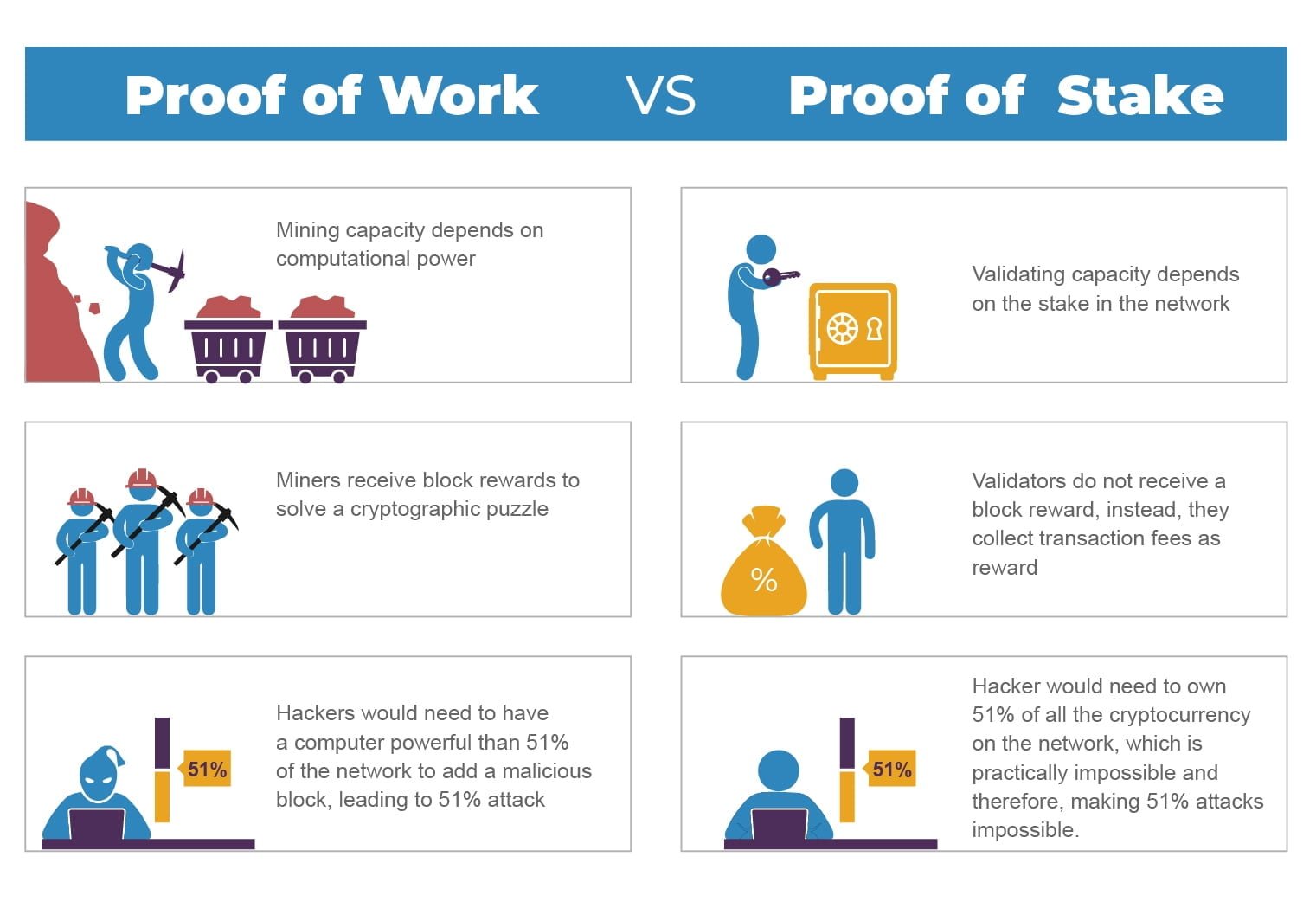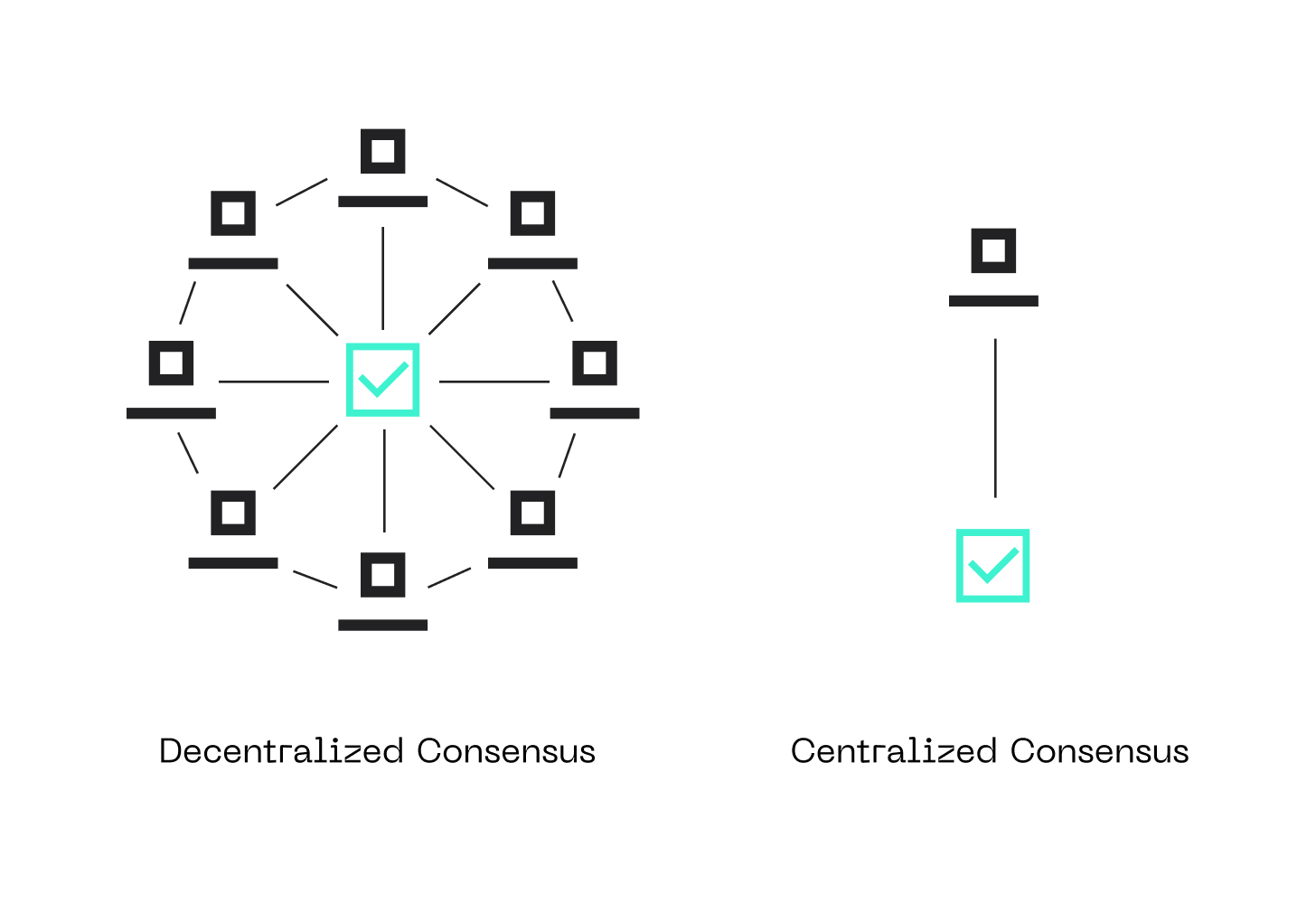Blockchain Consensus Mechanisms: Proof of Work vs. Proof of Stake

Executive Summary

Consensus mechanisms play a pivotal role in the decentralized architecture of blockchains, ensuring data integrity and preventing malicious activities. Proof of Work (PoW) and Proof of Stake (PoS) stand out as the two prominent approaches to achieving consensus. This article delves into the intricacies of both mechanisms, comparing their key features, implications, and potential use cases.

Introduction
Consensus mechanisms lay the foundation for trust and security in blockchain networks. They allow distributed participants to agree on the validity of transactions and the current state of the blockchain ledger. PoW and PoS are two distinct approaches that have shaped the development and application of blockchain technology.
Proof of Work (PoW)
PoW is a computational-intensive mechanism that requires miners to solve complex cryptographic puzzles to add new blocks to a blockchain. This energy-intensive process serves as a proof that the miner has invested significant resources to secure the network.
-
Key Features:
- Consensus is achieved through computational effort and electricity consumption.
- Miners are rewarded with cryptocurrency for validating transactions.
- The security of the network is directly proportional to the computational power invested by miners.
-
Implications:
- High energy consumption and environmental concerns.
- Potential for centralization as larger mining pools dominate.
- Slow transaction throughput and confirmation times.
Proof of Stake (PoS)
PoS, in contrast to PoW, relies on validators who stake their cryptocurrency holdings to participate in the consensus process. Instead of solving computational puzzles, validators are randomly selected to propose and validate new blocks based on the amount of cryptocurrency they hold.
-
Key Features:
- Consensus is reached based on staked cryptocurrency and random selection.
- Validators earn rewards for participating in the consensus process.
- Network security is enhanced by the financial stake of validators.
-
Implications:
- Reduced energy consumption and environmental impact.
- Decreased risk of centralization as validators are less likely to collude.
- Faster transaction throughput and confirmation times.
Comparison of PoW and PoS
| Feature | Proof of Work (PoW) | Proof of Stake (PoS) |
|---|---|---|
| Consensus Mechanism | Computational effort | Staking of cryptocurrency |
| Energy Consumption | High | Low |
| Transaction Speed | Slow | Fast |
| Security | Proportional to computational power | Proportional to staked cryptocurrency |
| Centralization Risk | High | Low |
Use Cases and Applications
Both PoW and PoS mechanisms have their own strengths and weaknesses, catering to different use cases. PoW remains a popular choice for cryptocurrencies like Bitcoin and Litecoin due to its proven security and stability. PoS, on the other hand, has gained traction in newer blockchain networks such as Ethereum, which benefit from faster transaction processing and reduced energy consumption.
Conclusion
The choice between PoW and PoS is a significant decision for blockchain developers and participants. PoW offers robust security but with high energy consumption, while PoS provides energy efficiency and faster transactions at the potential expense of security. As the blockchain landscape continues to evolve, the appropriate consensus mechanism will depend on the specific requirements and trade-offs of each use case.
Keyword Tags
- Blockchain
- Consensus Mechanism
- Proof of Work
- Proof of Stake
- Cryptocurrency
FAQ
Q: Which consensus mechanism is more secure?
A: PoW is generally considered more secure due to its energy-intensive nature, but PoS has proven to be secure with adequate stakeholder participation.
Q: Which consensus mechanism is more energy efficient?
A: PoS is significantly more energy efficient than PoW as it does not require intensive computational processes.
Q: Which consensus mechanism is faster?
A: PoS typically offers faster transaction processing times compared to PoW.
Q: Which consensus mechanism is less vulnerable to centralization?
A: PoS is less susceptible to centralization as validators must hold a significant stake in the network to participate.
Q: Which consensus mechanism is more widely adopted?
A: Both PoW and PoS are widely adopted, with PoW having dominance in established cryptocurrencies like Bitcoin and PoS gaining popularity in newer networks like Ethereum.
